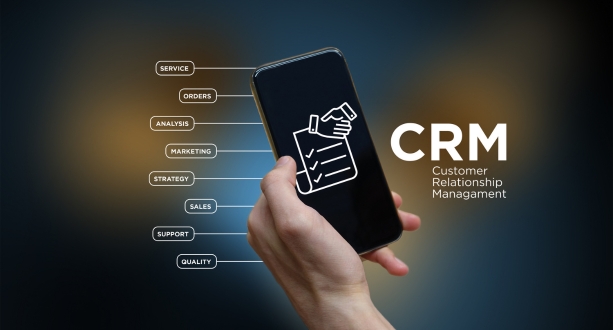Introduction to Salesforce CRM
Salesforce CRM, or Customer Relationship Management, is a powerful platform designed to help businesses manage their interactions and relationships with customers and potential customers. It provides a comprehensive suite of tools and features aimed at streamlining sales, marketing, customer service, and other key aspects of business operations.
One of the key benefits of Salesforce CRM is its ability to centralize customer data. By consolidating information such as contact details, purchase history, communication preferences, and interactions across various channels, Salesforce enables businesses to have a holistic view of their customers. This centralized database not only facilitates more personalized and targeted interactions but also improves collaboration among different departments within an organization.
Moreover, Salesforce CRM offers extensive customization options, allowing businesses to tailor the platform to meet their specific needs and workflows. From customizing data fields and layouts to creating automated processes and workflows, businesses can adapt Salesforce to align with their unique business processes and requirements. This flexibility ensures that businesses can leverage the full potential of the platform and optimize their operations for maximum efficiency and effectiveness.
Another notable feature of Salesforce CRM is its scalability. Whether you’re a small startup or a large enterprise, Salesforce can accommodate businesses of all sizes and scales. As your business grows and evolves, Salesforce can easily scale with you, ensuring that you have the tools and capabilities you need to support your expanding operations and customer base.
Furthermore, Salesforce CRM is cloud-based, meaning that it can be accessed anytime, anywhere, from any device with an internet connection. This level of accessibility enables remote work, collaboration, and real-time data access, empowering businesses to stay connected and responsive in today’s fast-paced digital world.
Salesforce CRM is a comprehensive and versatile platform that empowers businesses to effectively manage their customer relationships and drive growth. With its centralized data management, customization options, scalability, and accessibility, Salesforce CRM offers businesses the tools they need to succeed in today’s competitive marketplace. Whether you’re a small startup or a large enterprise, Salesforce CRM can help you streamline your operations, boost productivity, and deliver exceptional customer experiences.
Understanding Account Management
What are Accounts in Salesforce CRM?
In Salesforce CRM, an account is a fundamental object that represents an organization or entity with which your business interacts. This could be a customer, partner, vendor, or any other type of organization. Accounts serve as the central point of reference for managing interactions, transactions, and relationships with these entities. Each account typically includes important information such as name, address, contact details, industry, and other relevant data.
Importance of Account Management
Effective account management is crucial for several reasons:
- Centralized Information: Accounts provide a centralized repository for all information related to a particular organization. This helps in maintaining a single source of truth for customer data.
- Relationship Building: By understanding and managing accounts effectively, businesses can build stronger relationships with their customers and other stakeholders.
- Sales and Marketing Alignment: Account management ensures that sales and marketing efforts are aligned, allowing for more targeted and personalized communication and engagement.
- Opportunity Identification: Properly managed accounts can uncover new opportunities for upselling, cross-selling, and expansion of business relationships.
- Customer Satisfaction: By keeping track of interactions and preferences, account management can contribute to enhanced customer satisfaction and loyalty.
Creating and Managing Accounts in Salesforce CRM
Creating and managing accounts in Salesforce CRM involves several steps:
- Creating Accounts: Users can create new accounts manually by entering relevant information such as name, address, industry, and contact details. Alternatively, accounts can be imported from external sources or generated automatically through integrations with other systems.
- Managing Account Data: Once accounts are created, users can update and manage account data as needed. This includes adding new contacts, updating address information, recording interactions, and attaching relevant documents.
- Tracking Activities: Salesforce CRM allows users to track various activities related to accounts, such as emails, calls, meetings, and tasks. This helps in maintaining a complete record of interactions and engagements.
- Analyzing Performance: Salesforce provides reporting and analytics tools that enable users to analyze the performance of their accounts. This includes metrics such as sales revenue, customer satisfaction scores, and pipeline visibility.
Integrating Account and Contact Management
Relationship between Accounts and Contacts:
Accounts:
Accounts typically represent companies, organizations, or entities with whom a business engages in transactions or interactions. They serve as a central entity in managing business relationships and often encompass various attributes such as company details, billing information, transaction history, etc.
Contacts:
Contacts, on the other hand, represent individuals associated with these accounts. They could be decision-makers, influencers, or simply points of contact within the organization. Contacts are essential for personalizing interactions and nurturing relationships at an individual level.
Relationship Dynamics:
The relationship between accounts and contacts is typically one-to-many. A single account can have multiple associated contacts, representing different stakeholders within the organization. Conversely, a contact can be associated with multiple accounts if they have affiliations or roles across various entities.
Interconnectedness:
The strength of the relationship between accounts and contacts lies in their interconnectedness. Understanding how contacts relate to accounts provides insights into the broader organizational structure, decision-making processes, and overall engagement strategy.
Strategies for Seamless Integration:
Unified Data Management:
To ensure seamless integration, businesses need a unified approach to data management. This involves consolidating account and contact information into a centralized system or database, enabling easy access and updates across various touchpoints.
Cross-Referencing and Linking:
Establishing clear links and cross-references between accounts and contacts is essential. This allows for efficient navigation between related entities and facilitates contextual insights. For instance, within a CRM (Customer Relationship Management) system, each contact should be associated with the relevant account, and vice versa.
Automated Synchronization:
Implementing automated synchronization mechanisms ensures that changes made to account or contact information reflect instantly across all integrated systems and platforms. This minimizes data discrepancies and enhances data accuracy.
Hierarchical Relationship Mapping:
Understanding the hierarchical relationship between accounts and contacts is crucial for effective management. Businesses should be able to map out organizational structures, identify key decision-makers, and track relationships at various levels within the client or customer organization.
Personalization and Customization:
Utilize integrated account and contact data to personalize interactions and tailor communication strategies. By understanding individual preferences, roles, and engagement history, businesses can deliver targeted and relevant messaging, ultimately strengthening relationships.
Analytics and Insights:
Integrated data sets provide rich analytics and insights into account and contact interactions. Leveraging analytics tools, businesses can track engagement metrics, identify trends, forecast future behavior, and make data-driven decisions to optimize relationship management strategies.
The seamless integration of account and contact management requires a holistic approach encompassing data consolidation, cross-referencing, automation, hierarchical mapping, personalization, and analytics. By effectively managing the relationship dynamics between accounts and contacts, businesses can enhance customer satisfaction, drive revenue growth, and foster long-term partnerships.
Exploring Contact Management
Defining Contacts in Salesforce CRM:
In Salesforce CRM (Customer Relationship Management), a contact refers to an individual who is associated with an account or organization. Contacts are typically individuals with whom a business interacts, such as customers, clients, leads, or stakeholders. In Salesforce, contacts are managed within the context of an account, which represents the company or organization they are affiliated with. Each contact record contains information such as name, email address, phone number, job title, and any other relevant details that help in understanding and managing the relationship with that individual.
Salesforce allows for the customization of contact fields to capture specific information tailored to the organization’s needs. This flexibility enables businesses to track important data points and interactions with contacts effectively.
Significance of Contact Management:
Contact management is a crucial aspect of CRM systems like Salesforce because it enables businesses to centralize and organize their interactions with customers and prospects. Here are some key reasons why contact management is significant:
- Improved Communication: Centralizing contact information ensures that all team members have access to accurate and up-to-date contact details, facilitating better communication and coordination.
- Personalized Interactions: By maintaining detailed records of interactions and preferences, businesses can personalize their communications with contacts, leading to more meaningful relationships and higher customer satisfaction.
- Sales Efficiency: Contact management streamlines the sales process by providing sales representatives with quick access to relevant contact information, allowing them to focus on selling rather than searching for contact details.
- Data Analysis: Analyzing contact data over time can provide valuable insights into customer behavior, preferences, and trends, helping businesses make informed decisions and optimize their sales and marketing strategies.
Adding and Managing Contacts in Salesforce CRM:
In Salesforce CRM, adding and managing contacts is a straightforward process facilitated by the platform’s user-friendly interface. Here’s an overview of the typical steps involved:
- Adding Contacts: Users can manually create new contact records by entering relevant information such as name, email address, phone number, and any other pertinent details. Additionally, contacts can be imported in bulk from external sources like spreadsheets or synced with other applications.
- Managing Contacts: Once contacts are added, Salesforce provides various tools for managing and organizing them effectively. Users can categorize contacts by criteria such as account affiliation, lead status, or geographic location using tags, lists, or custom fields. Furthermore, Salesforce’s powerful search and filtering capabilities make it easy to locate specific contacts and access their details quickly.
- Tracking Interactions: Salesforce enables users to track interactions with contacts by logging activities such as emails, phone calls, meetings, or tasks directly within the contact record. This comprehensive view of communication history allows for better relationship management and follow-up.
- Automating Workflows: Salesforce offers automation features like workflows, process builder, and triggers that can streamline contact management tasks such as lead conversion, follow-up reminders, or email notifications, saving time and improving efficiency.
Best Practices for Account and Contact Management
- Data Quality and Consistency:
This involves ensuring that the data related to accounts and contacts within your system is accurate, up-to-date, and consistent. It’s crucial to regularly review and cleanse your data to eliminate duplicates, correct errors, and standardize formats. Data quality directly impacts the effectiveness of your sales and marketing efforts, as well as overall business operations.
- Customization and Personalization:
Tailoring your interactions with accounts and contacts based on their specific needs, preferences, and characteristics is essential for building strong relationships and maximizing engagement. This can involve customizing communication strategies, offering personalized product recommendations, and providing targeted content that resonates with each individual or organization.
- Regular Updates and Maintenance:
Continuously updating and maintaining your account and contact data ensures that you’re working with the most current information. This includes regularly refreshing contact details, tracking changes in organizational structures, and staying informed about any relevant developments or activities that may impact your relationships with these entities.
- Utilizing Automation Tools:
Automation tools can streamline various aspects of account and contact management, such as data entry, lead scoring, email outreach, and task assignment. By leveraging automation, you can increase efficiency, reduce manual workload, and ensure consistency in your processes. Additionally, automation can help you identify opportunities for engagement and prioritize tasks effectively.
- Collaboration and Communication:
Effective collaboration and communication among team members are essential for successful account and contact management. This involves sharing relevant information, coordinating efforts, and aligning strategies to deliver a cohesive experience for accounts and contacts. Leveraging collaboration tools and fostering open communication channels can facilitate teamwork and enhance overall productivity.
Advanced Strategies for Maximizing Effectiveness
Utilizing Salesforce Einstein for Predictive Insights
Salesforce Einstein is an AI-powered feature within the Salesforce platform that offers predictive analytics and insights. By leveraging Einstein, businesses can gain valuable predictive insights into their sales processes, customer behavior, and more. This allows for proactive decision-making, such as identifying potential leads likely to convert, predicting customer churn, or forecasting sales trends. By integrating Einstein into your Salesforce workflows, you can automate processes, personalize interactions, and ultimately drive better business outcomes.
Implementing AI-driven Recommendations
AI-driven recommendations can enhance various aspects of your Salesforce implementation, from guiding sales representatives on which leads to prioritize to suggesting upsell opportunities for existing customers. By analyzing historical data and patterns, AI algorithms can provide personalized recommendations tailored to each customer’s needs and preferences. These recommendations can improve sales effectiveness, increase customer satisfaction, and drive revenue growth. Integrating AI-driven recommendation engines into your Salesforce environment can automate decision-making processes and empower your sales team to make data-driven choices.
Leveraging Third-party Integrations
Integrating third-party applications and services with Salesforce can extend its functionality and provide additional capabilities tailored to your business needs. Whether it’s integrating with marketing automation tools, accounting software, or customer support platforms, third-party integrations can streamline workflows, improve data accuracy, and enhance collaboration across departments. By leveraging the Salesforce AppExchange and APIs, businesses can seamlessly connect Salesforce with a wide range of external systems, unlocking new opportunities for efficiency and innovation.
Creating Custom Reports and Dashboards
Custom reports and dashboards empower users to visualize and analyze Salesforce data in ways that are most relevant to their roles and objectives. By creating tailored reports and dashboards, businesses can gain valuable insights into their sales pipeline, performance metrics, and customer interactions. Customization options allow users to choose specific data fields, filters, and visualization formats to suit their needs. This enables stakeholders at all levels to monitor key metrics, track progress towards goals, and make informed decisions based on real-time data. With customizable reporting capabilities, businesses can drive continuous improvement and optimize their Salesforce implementation for maximum effectiveness.
Future Trends and Innovations
AI-driven Account and Contact Management:
AI-driven account and contact management refers to the integration of artificial intelligence technologies into the processes of managing customer accounts and contacts within businesses. This involves leveraging machine learning algorithms and natural language processing (NLP) to automate various tasks related to customer relationship management (CRM), such as data entry, lead scoring, contact segmentation, and personalized communication.
One of the key benefits of AI-driven account and contact management is its ability to streamline and optimize customer interactions, leading to improved efficiency, increased productivity, and better customer satisfaction. By analyzing vast amounts of data, AI systems can provide valuable insights into customer behavior, preferences, and needs, enabling businesses to tailor their marketing and sales strategies accordingly.
Additionally, AI-powered chatbots and virtual assistants can handle routine inquiries and support requests, freeing up human agents to focus on more complex and high-value tasks. This not only enhances the overall customer experience but also reduces operational costs for businesses.
Enhanced Mobile Capabilities:
Enhanced mobile capabilities refer to the continued evolution and improvement of mobile technologies and applications to meet the growing demands of users in terms of performance, functionality, and user experience. With the widespread adoption of smartphones and tablets, mobile devices have become integral to both personal and professional life, driving the need for more advanced features and capabilities.
Some of the key trends in enhanced mobile capabilities include:
- 5G technology: The rollout of 5G networks enables faster data speeds, lower latency, and greater network capacity, unlocking new possibilities for mobile applications and services such as augmented reality (AR), virtual reality (VR), and Internet of Things (IoT) devices.
- Progressive web apps (PWAs): PWAs combine the features of traditional websites and mobile applications, offering a fast and seamless user experience across various devices and platforms without the need for installation.
- Mobile commerce (m-commerce): The increasing popularity of mobile shopping has led to the development of innovative payment solutions, immersive shopping experiences, and personalized recommendations tailored to mobile users.
- Mobile security: As mobile devices store sensitive personal and financial information, there is a growing emphasis on enhancing mobile security measures such as biometric authentication, encrypted communication, and secure app sandboxing to protect user data from cyber threats.
Enhanced mobile capabilities empower users to stay connected, productive, and entertained while on the go, driving further innovation in the mobile industry.
Blockchain Integration for Data Security:
Blockchain integration for data security involves leveraging blockchain technology to enhance the security, integrity, and transparency of data management and transactions across various industries. Originally developed as the underlying technology behind cryptocurrencies such as Bitcoin, blockchain has gained widespread attention for its potential applications beyond digital currencies.
One of the key features of blockchain is its decentralized and immutable nature, which means that data stored on a blockchain network cannot be altered or tampered with once recorded. This makes blockchain a highly secure and reliable platform for storing sensitive information, such as financial records, medical data, supply chain transactions, and identity verification.
By integrating blockchain into existing systems and processes, organizations can mitigate the risk of data breaches, fraud, and cyber attacks, as well as ensure compliance with regulatory requirements such as GDPR (General Data Protection Regulation). Furthermore, blockchain enables greater transparency and accountability by providing a tamper-proof audit trail of all data transactions, enhancing trust and confidence among stakeholders.
Some common use cases of blockchain integration for data security include:
- Supply chain management: Blockchain can be used to track the movement of goods and verify the authenticity of products throughout the supply chain, reducing the risk of counterfeiting and ensuring product quality and safety.
- Identity management: Blockchain-based identity management systems allow individuals to control their personal data and authenticate their identity without relying on centralized authorities, enhancing privacy and security in online transactions.
- Smart contracts: Smart contracts are self-executing contracts with the terms of the agreement written into code. By leveraging blockchain technology, smart contracts enable automated and secure execution of transactions, eliminating the need for intermediaries and reducing the risk of fraud.
Conclusion
Effective account and contact management are essential for building strong customer relationships and driving business success. By leveraging Salesforce CRM’s powerful tools and features, businesses can streamline processes, personalize interactions, and gain valuable insights into customer behavior. By adopting best practices and embracing emerging trends, organizations can stay ahead of the curve and unlock the full potential of account and contact management in Salesforce CRM.








